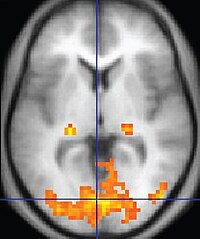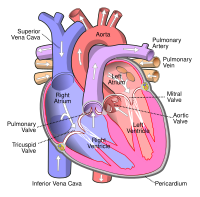
Late effects of radiofrequency ablation lesions resulting in a progressive mitral valve perforation in a 2-month-old infant
Sign Up to like & getrecommendations! Published in 2019 at "Cardiology in the Young"
DOI: 10.1017/s1047951119001926
Abstract: Abstract There has been great concern with the use of radiofrequency ablation in infants since radiofrequency ablation lesions were shown to have a progressing nature in immature myocardium of animals. In this report, we present… read more here.
Keywords: radiofrequency; month old; radiofrequency ablation; old infant ... See more keywords

Pulmonary veins reconnection pattern differences after failed radiofrequency ablation and cryoballoon ablation for atrial fibrillation
Sign Up to like & getrecommendations! Published in 2021 at "European Heart Journal"
DOI: 10.1093/eurheartj/ehab724.0526
Abstract: Point-by-point radiofrequency ablation (RF) and one-shot cryoballoon ablation (CRYO) electrically isolate pulmonary veins (PVs) in atrial fibrillation (AF) using different techniques and energies. This study aimed to examine differences in PVs reconnection pattern and ablation… read more here.
Keywords: reconnection pattern; ablation; ablation lesions; failed cryo ... See more keywords

P2842Sequential application of horizontal and vertical orientation on radiofrequency ablation lesions produced by thermocool smarttouch SF catheter
Sign Up to like & getrecommendations! Published in 2019 at "European Heart Journal"
DOI: 10.1093/eurheartj/ehz748.1152
Abstract: Ablation lesions represent a complex interaction between the ablation catheter configuration and tissue anatomy. An understanding of each variable can assist in determination of the optimal lesion set. One such variable is the catheter orientation.… read more here.
Keywords: catheter; orientation; lesion; catheter orientation ... See more keywords

Scanned 3-D Intracardiac ARFI and SWEI for Imaging Radio-Frequency Ablation Lesions
Sign Up to like & getrecommendations! Published in 2017 at "IEEE Transactions on Ultrasonics, Ferroelectrics, and Frequency Control"
DOI: 10.1109/tuffc.2017.2692558
Abstract: Radio-frequency ablation (RFA) is used to locally disrupt electrical propagation in myocardium and treat arrhythmias, and direct visualization of ablation lesions by acoustic radiation force methods may benefit RFA procedures. This paper compares four imaging… read more here.
Keywords: ablation; radio frequency; swei; frequency ablation ... See more keywords

Acute noncontrast T1‐weighted magnetic resonance imaging predicts chronic radiofrequency ablation lesions
Sign Up to like & getrecommendations! Published in 2018 at "Journal of Cardiovascular Electrophysiology"
DOI: 10.1111/jce.13709
Abstract: Magnetic resonance imaging (MRI) has been used to visualize radiofrequency (RF) ablation lesions but the relationship between volumes that enhance in acute MRI and the chronic lesion size is unknown. read more here.
Keywords: ablation lesions; magnetic resonance; resonance imaging; radiofrequency ablation ... See more keywords

Ablation of atrial fibrillation beyond pulmonary vein isolation: Do additional ablation lesions impact left atrial function?
Sign Up to like & getrecommendations! Published in 2022 at "Journal of Cardiovascular Electrophysiology"
DOI: 10.1111/jce.15780
Abstract: Electrical isolation of pulmonary veins (PVI) is a cornerstone for atrial fibrillation (AF) ablation. The overall effect of AF ablation, and especially lesions beyond PVI, on left atrial (LA) function is currently poorly understood. Our… read more here.
Keywords: function; atrial function; ablation; ablation lesions ... See more keywords